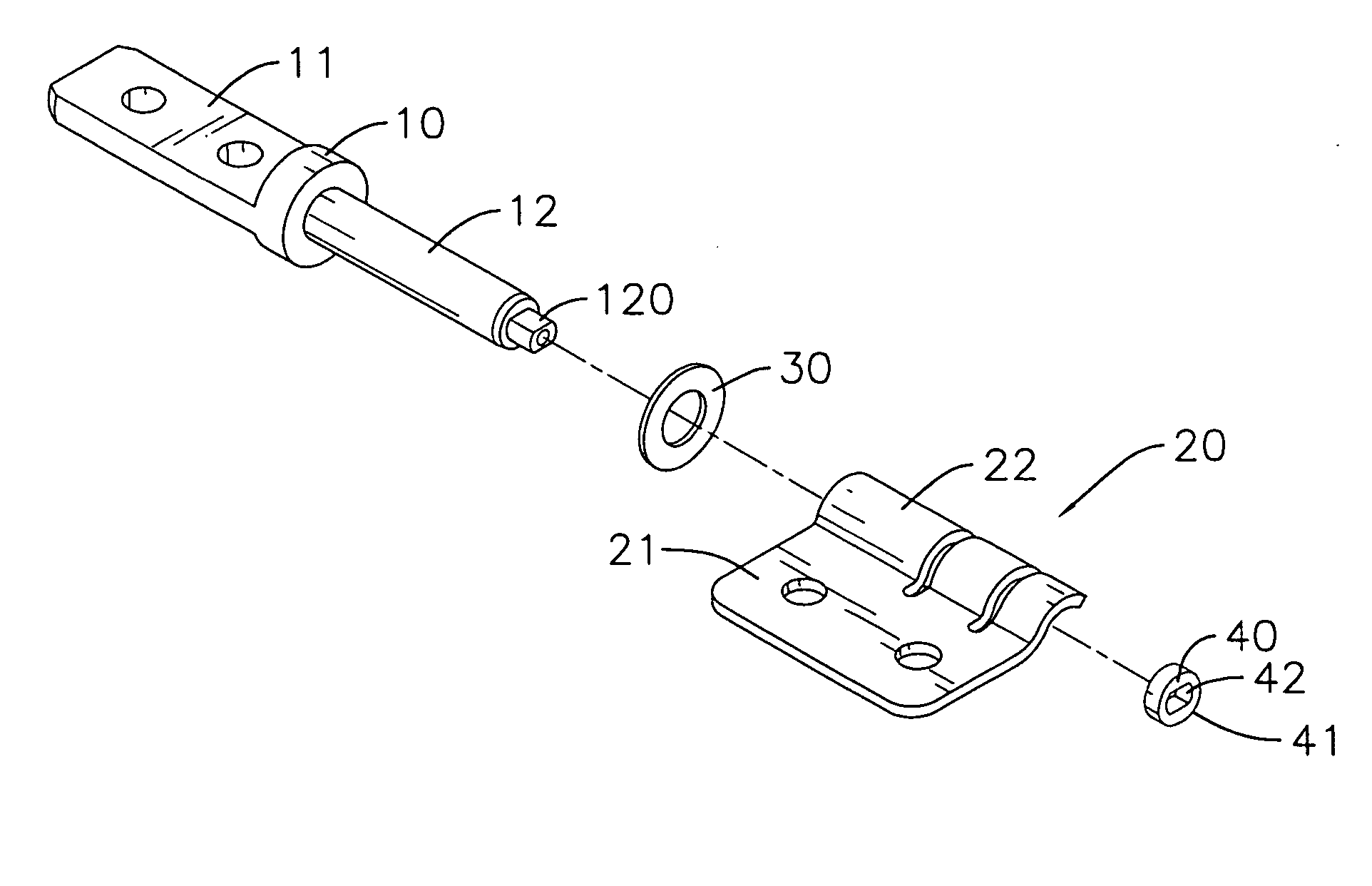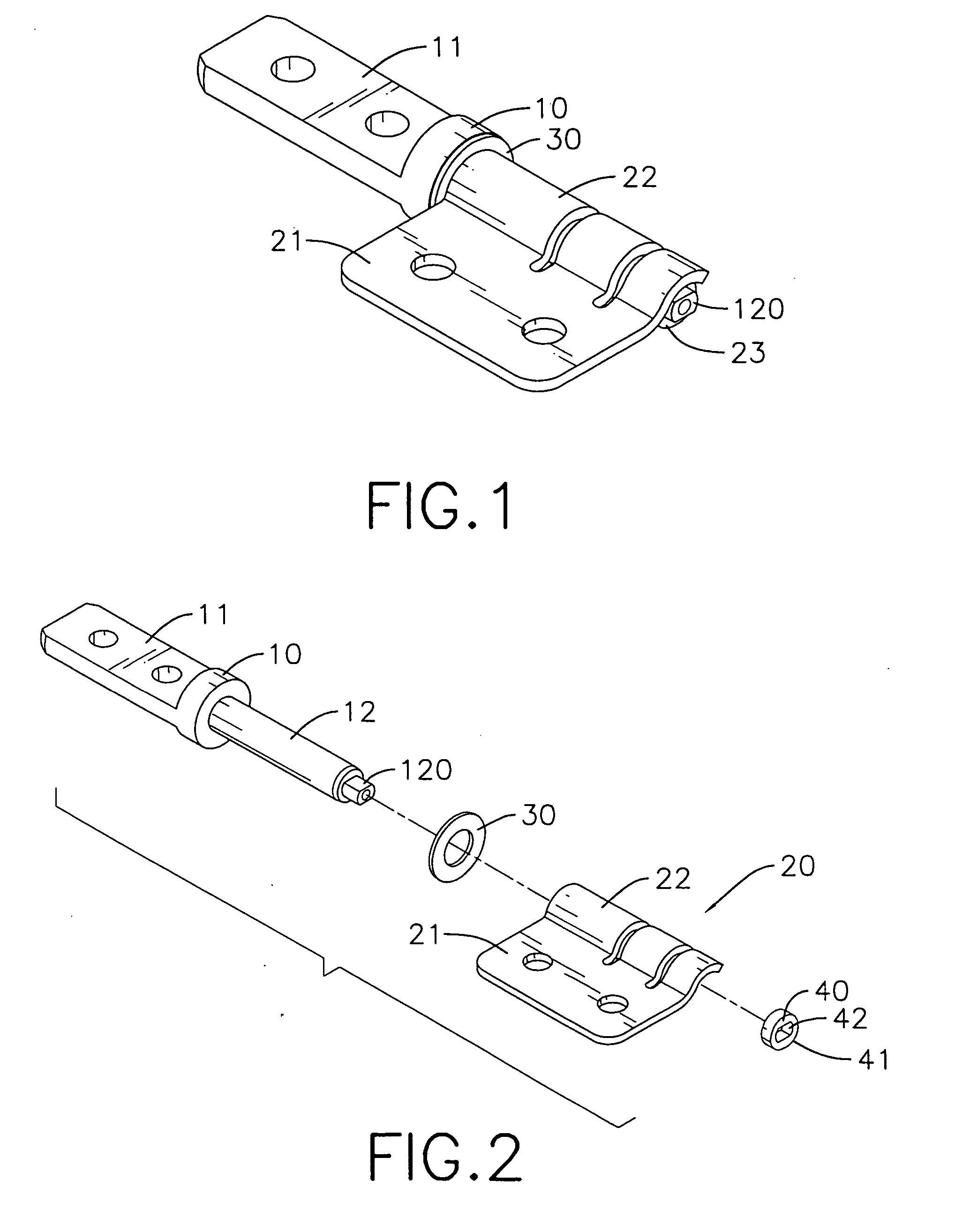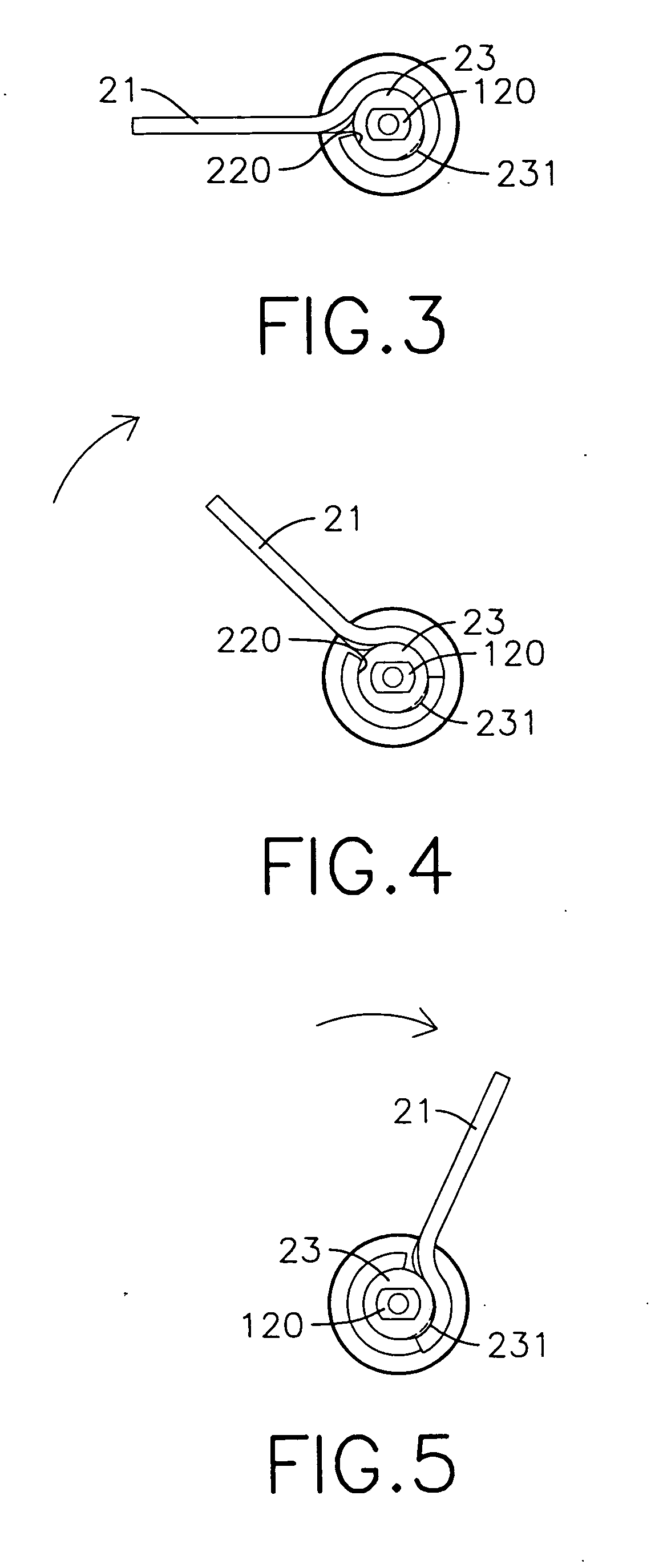Positioning hinge
a hinge and hinge body technology, applied in the field of positioning hinges, can solve the problems of conventional hinges being difficult to use, the cover may fall and strike the body, and the hinge may not be able to meet the needs of use,
- Summary
- Abstract
- Description
- Claims
- Application Information
AI Technical Summary
Benefits of technology
Problems solved by technology
Method used
Image
Examples
first embodiment
[0028] With reference to FIGS. 1, 2 and 3 to 5, the positioning hinge in the first embodiment comprises a leaf assembly (20), a pintle (10), an optional washer (30) and a cam (40) as positioning element.
[0029] The barrel (22) of the leaf assembly (20) is tubular and has a proximal end, a distal end, a longitudinal gap and an inner surface (220). The longitudinal gap is formed from the proximal end to the distal end and allows the barrel (22) to expand slightly. The inner surface (220) is formed inside the barrel (22).
[0030] The pintle (10) has a proximal end, a distal end, a connector (11) and a shaft (12). The connector (11) is defined on and protrudes longitudinally from the proximal end of the pintle (10) and can be mounted in a body (51) (with reference to FIG. 13). The shaft (12) is defined on the distal end, which extends through the washer (30) and mount into the barrel (22) of the leaf assembly (20) and has a distal end and a non-circular sectional axle (120) formed on the ...
second embodiment
[0032] With reference to FIGS. 6, 7 and 10 to 12, the positioning hinge in the second embodiment comprises a leaf assembly (20′), a pintle (10), an optional washer (30) and a rod (40′) as a positioning element. The leaf assembly (20′) has a leaf (21) and a barrel (22′). The barrel (22′) is tubular and has a middle, a cutout (224), a side end, two flanges (222)(223) and a sloping surface (221). The cutout (224) is defined on the middle and has two sectional surfaces. The sloping surface (221) is formed on the side end. The flanges (222)(223) are formed on the side end separately.
[0033] The pintle (10) has a proximal end, a distal end, a connector (11) and a shaft (12′). The connector (11) is defined on and protrudes longitudinally from the proximal end of the pintle (10) and can be mounted in a body (51) (with reference to FIG. 13). The shaft (12′) is defined on the other end, which passes through the washer (30) and mounts into the barrel (22′) of the leaf assembly (20′) and has a d...
third embodiment
[0035] With reference to FIG. 8, 9, in the third embodiment, the said sloping surface (221) and the flanges (222)(223) are formed on one sectional surfaces of the cutout (224), and the said mounting hole (121) is also formed on the middle of the shaft (12′). Such that the rod (40′) is located at the middle of the shaft (12′) and the head (42′) rubs against the sloping surface (221) to generate a growing friction and provide the same effect.
[0036] With reference to 10, 11 and 12, the rod (40′) is wedged by the flanges (222)(223) to limit the rotational angle of the cover (52).
[0037] With further reference to FIG. 13, when the cover (52) is raised, the first leaf (21) mounted in the cover (52) is turned round simultaneously. When the cover (52) is turned, the positioning element (40, 40′) rubs against the surface (220,221) consequentially and generates a growing friction. With the growing friction, the hinge in accordance to the present invention is then able to strongly hold the rai...
PUM
 Login to View More
Login to View More Abstract
Description
Claims
Application Information
 Login to View More
Login to View More - R&D
- Intellectual Property
- Life Sciences
- Materials
- Tech Scout
- Unparalleled Data Quality
- Higher Quality Content
- 60% Fewer Hallucinations
Browse by: Latest US Patents, China's latest patents, Technical Efficacy Thesaurus, Application Domain, Technology Topic, Popular Technical Reports.
© 2025 PatSnap. All rights reserved.Legal|Privacy policy|Modern Slavery Act Transparency Statement|Sitemap|About US| Contact US: help@patsnap.com



